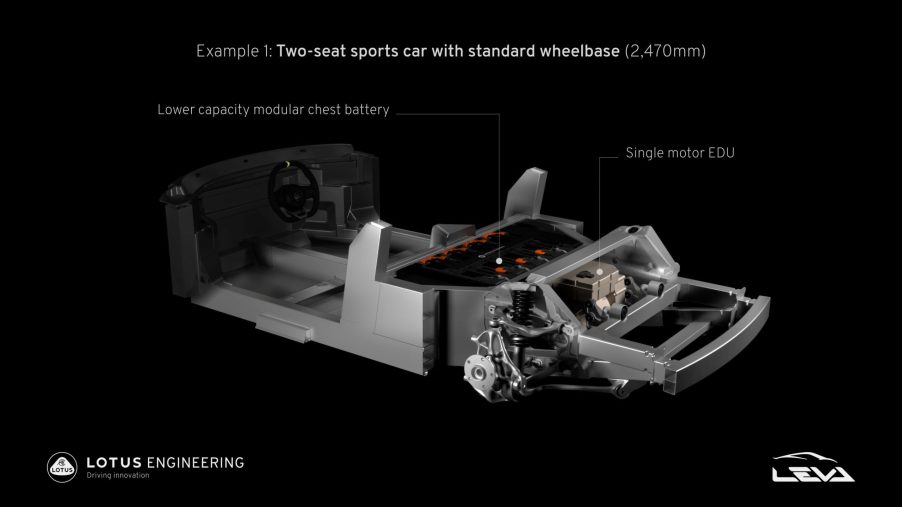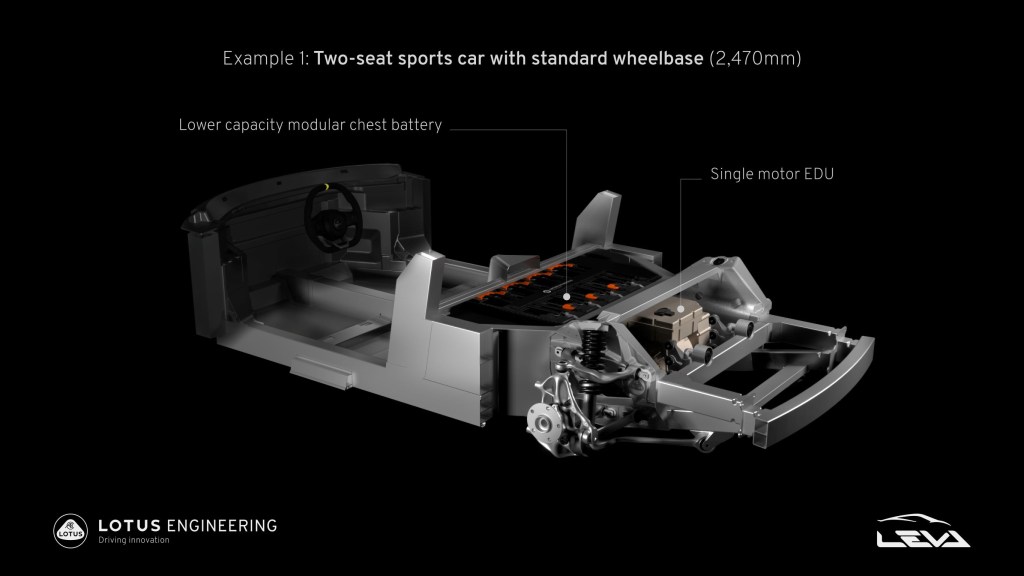
The Electric Lotus Elise Sequel Packs More Power Than the Original
As the Emira GT4 gets ready to hit some racetracks, Lotus is starting its all-electric changeover. From now on, all of the British sporting brand’s cars will be EVs. But while the Evija hypercar will be first out of the gate, Lotus has less extreme electric cars in the works. And that includes an electric successor to one of the company’s most beloved modern models: the Lotus Elise.
Lotus is working on an electric car to succeed the Elise: the Type 135

As part of its move to EVs only, Lotus recently announced that several electric cars would follow the Evija. While these plans include two SUVs, they also include an EV currently dubbed ‘Type 135,’ Motor1 reports. Lotus uses the ‘Type’ nomenclature as an internal reference for all its road-going and race car projects. For example, the new Radford Type 62-2 references the 1969 Lotus Type 62 race car.
Although the Lotus Type 135 doesn’t have an official name yet, it does have a goal: succeeding the Lotus Elise. For a long time, the mid-engine sports car was the cheapest way to get behind the wheel of a Lotus. However, the company’s efforts at transforming itself left the Elise without a manufacturing line, Road & Track explains. So, shortly after Lotus celebrated the beloved car’s 25th anniversary, it canceled it.
Admittedly, Lotus canceling the Elise matters less to US customers than international ones. That’s because the Elise hasn’t been sold here for several years after its safety-regulation exemption expired. But even so, it leaves Lotus without a reasonably-affordable sports car. And since the brand is planning on expanding its US presence, it needs something cheaper than the Emira.
Besides ‘lightness,’ the electric Lotus Elise successor is also adding horsepower

At first glance, it might seem difficult for an electric car like the Type 135 to live up to Lotus founder Colin Chapman’s “simplify, and add lightness” mantra. Indeed, the outgoing Elise was simple and focused to the point of lacking cupholders. Yet Lotus says its upcoming entry-level EV will live up to the brand’s tenets—including the handling-related ones.
For one, the Type 135 will ride on Lotus’s new dedicated electric car E-Sports platform, developed through Project LEVA, Motor1 says. To compensate for the battery pack’s weight, the platform’s rear subframe is lighter and stiffer than the equivalent Emira part. And, to improve handling, the pack is a structural member of the frame. Plus, the batteries can either be stacked behind the passenger and driver or laid flat on the floor. The Type 135 will use the former configuration, Autocar reports.
Given that it’s a successor to the Elise, the Lotus Type 135 will likely use the shortest version of the E-Sports platform. Based on the specs Lotus released, that suggests the electric sports car will offer 66.4 kWh of battery capacity. Although the platform can accommodate two electric motors, the Type 135 will likely only use one. But even so, it will still be more powerful than any street-legal Elise.
Apart from the original S1 models, the Lotus Elise has always used a Toyota-sourced four-cylinder engine. In the Elise Sport 240 Final Edition, the 1.8-liter supercharged four-cylinder engine makes 240 hp and 180 lb-ft of torque. Yet even with only one motor, the Type 135 makes up to 469 hp. So, even if it’s heavier than the Elise, it’s almost twice as powerful.
When will the Type 135 make its debut?
As of this writing, Lotus hasn’t released an official debut date for the Type 135. However, Lotus plans to have its electric Elise successor ready by 2026.
Some might be worried that an electric Elise follow-up won’t have the same spark as the original. But so far, the Type 135 seems like a sequel worthy of the original.
Follow more updates from MotorBiscuit on our Facebook page.


